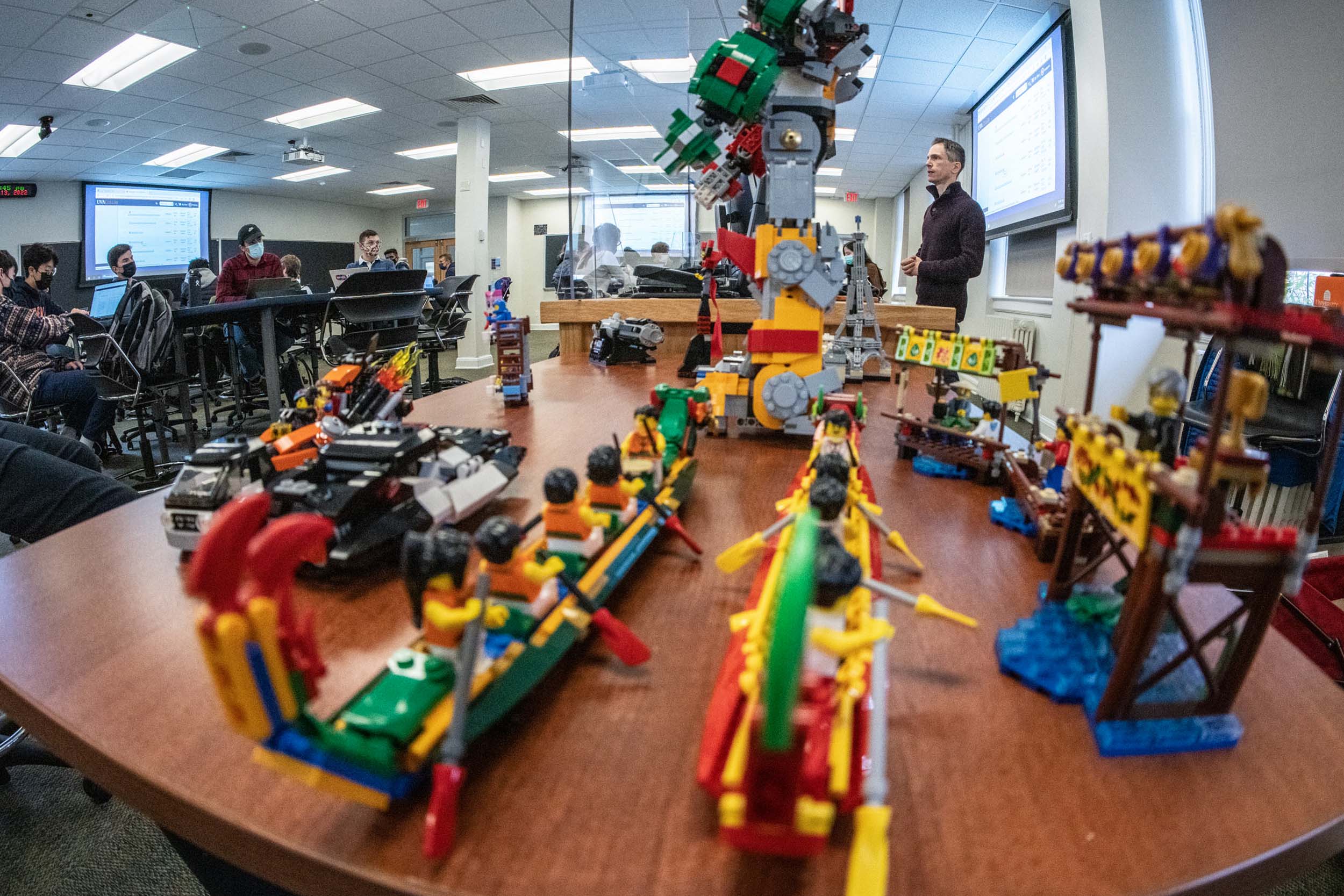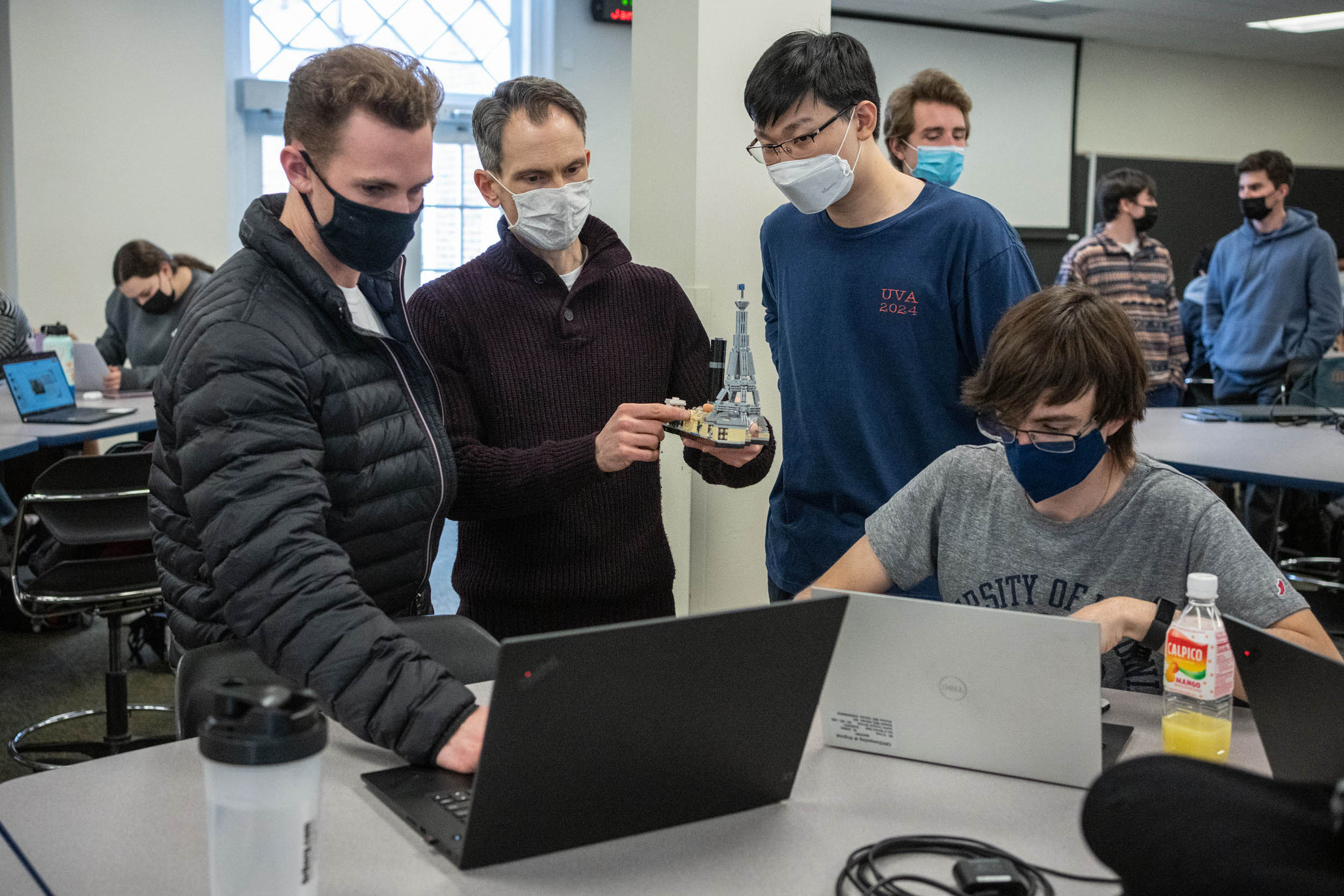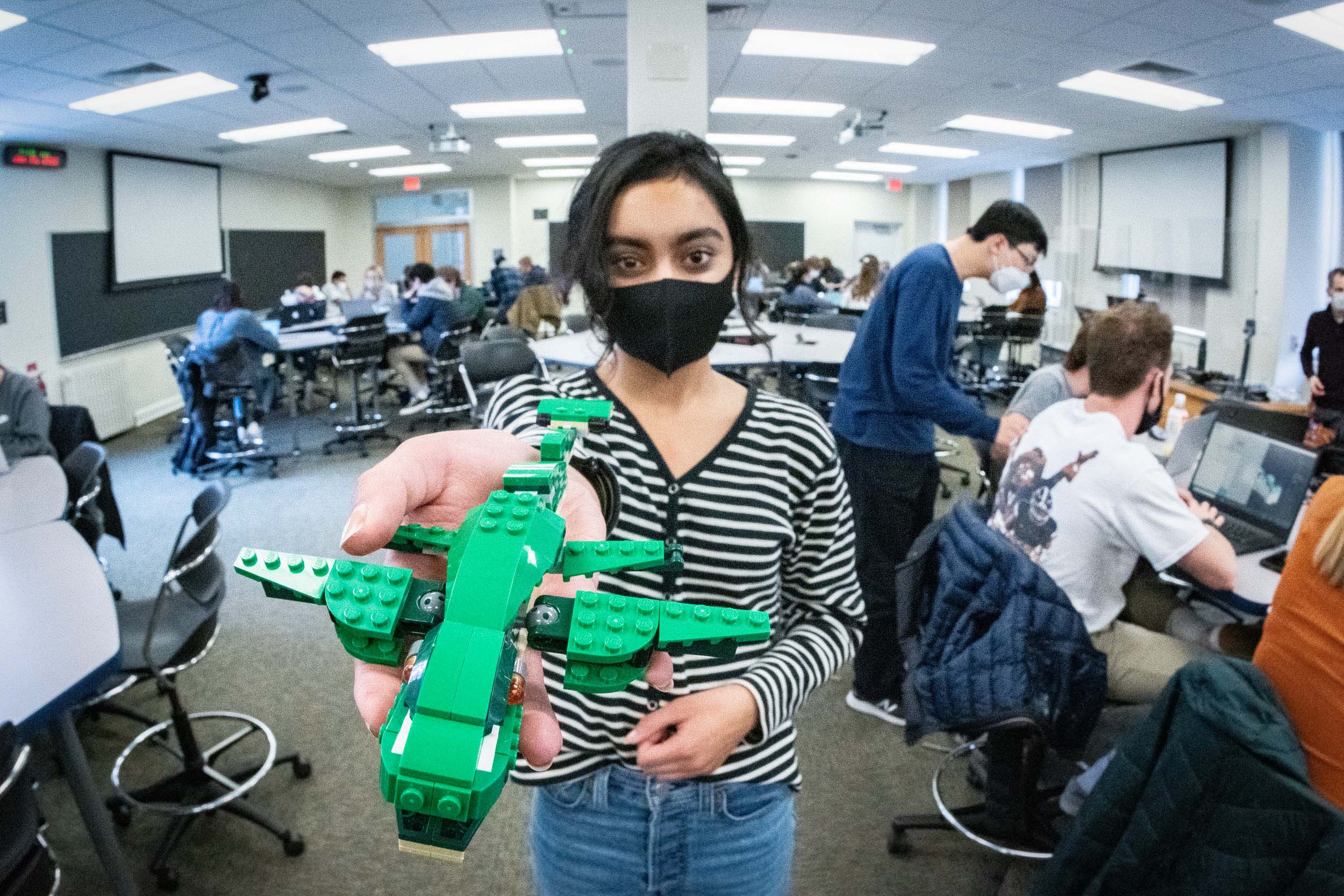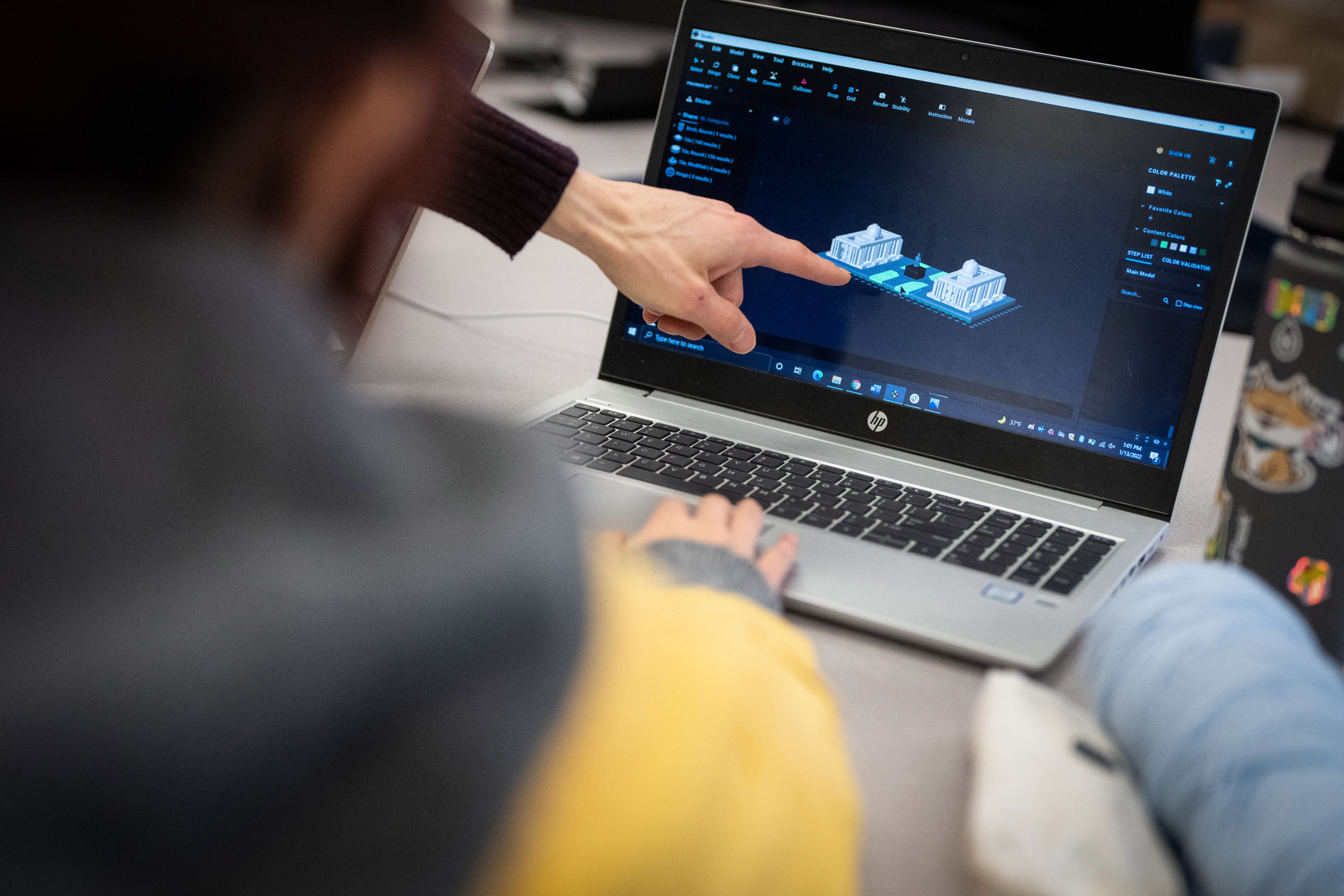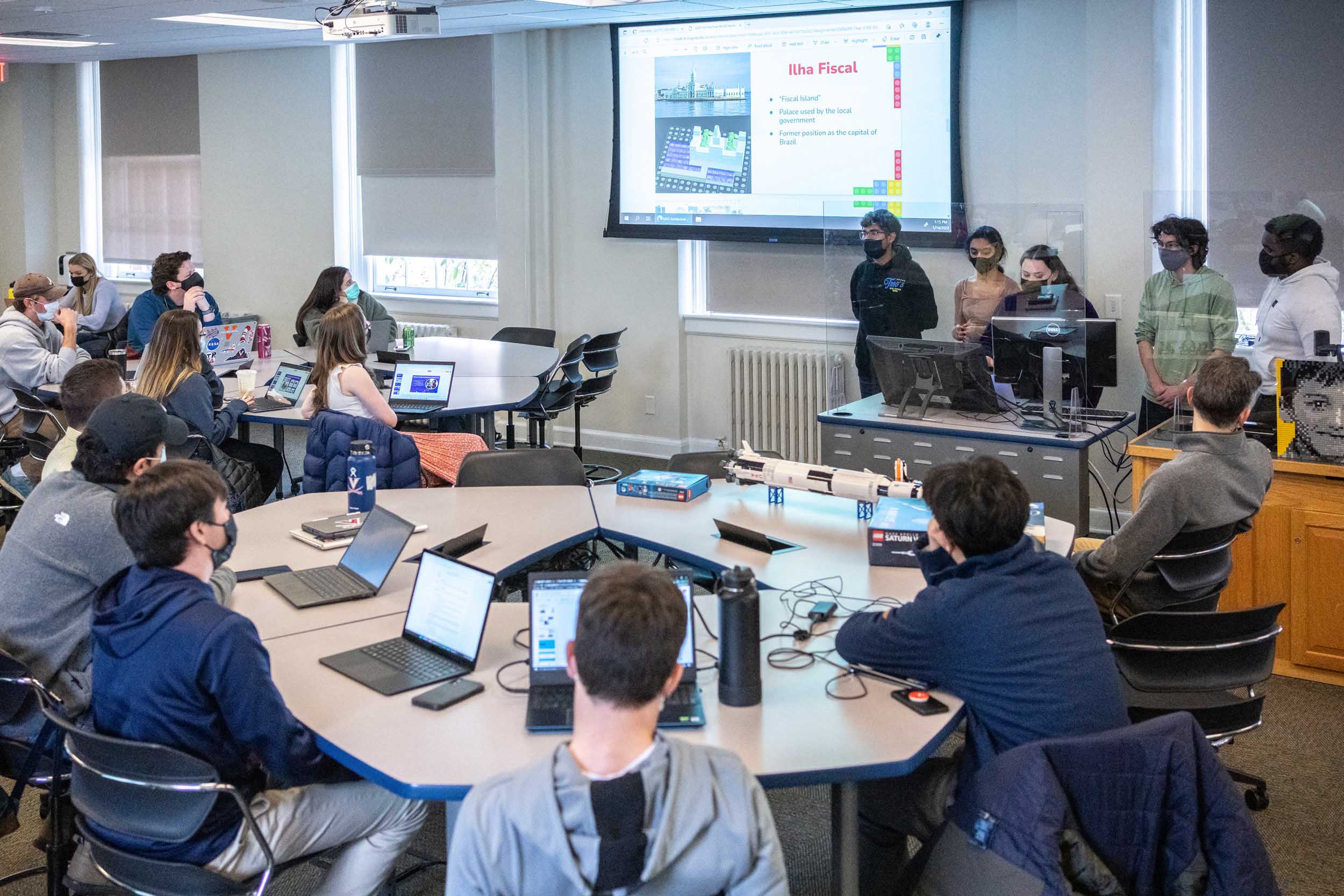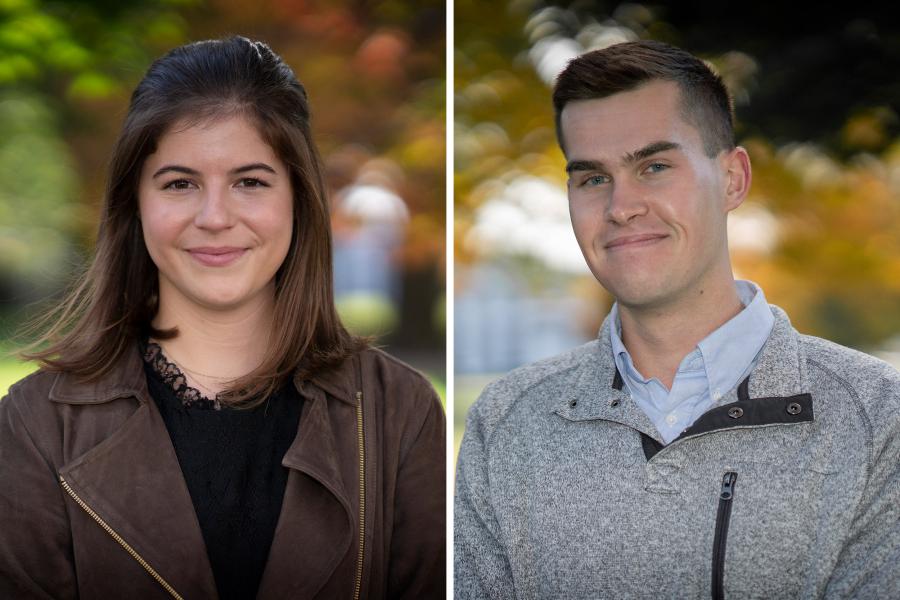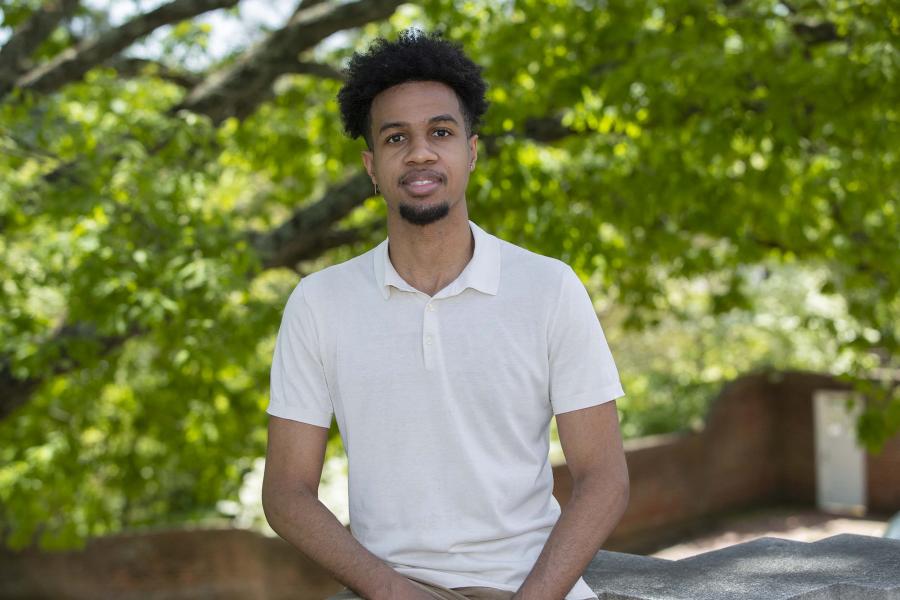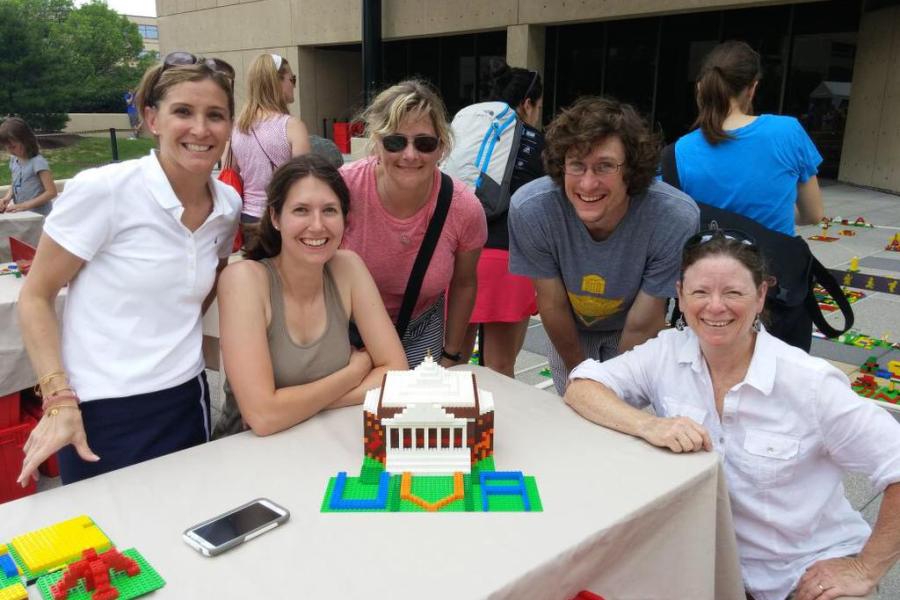Ben Laugelli has three college degrees, including a doctorate from the University of Virginia in religious studies. He’s been the winner of a dissertation-writing grant and has had work presented at a variety of national symposiums.
Yes, that Ben Laugelli, the one standing in front of a Thornton Hall classroom with a Minions Lego toy in his hands.
The final day of a January term course called “The Lego Course: Engineering Design and Values” began with some show-and-tell from the instructor. Laugelli, an assistant professor in the Department of Engineering and Society in the School of Engineering and Applied Science, lined a table adjacent to his desk with adult creations from a childhood pastime.
The back row hosted the Razor Crest ship from the “Stars Wars”-based television series “The Mandalorian” and a “Spiderman”-themed city set featuring “The Daily Bugle” building. The front row featured the goggle-wearing Minions from “Despicable Me” and a red Ferrari inspired by the 1980s-era hit TV show, “Magnum, P.I.”
